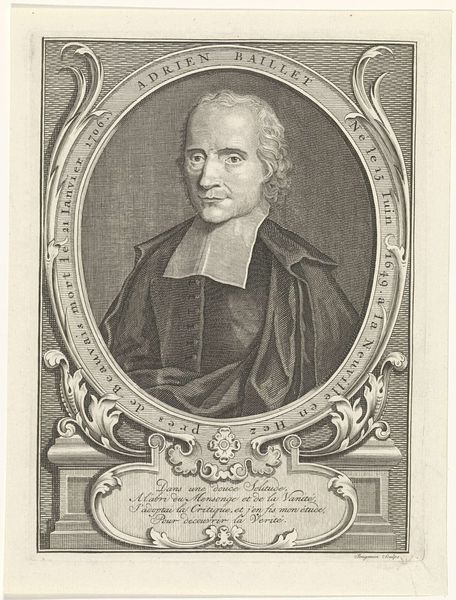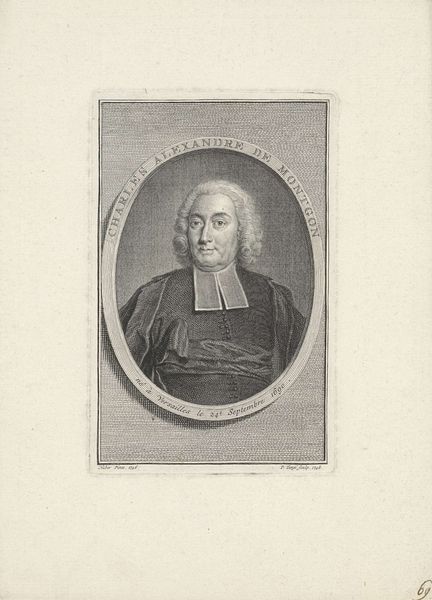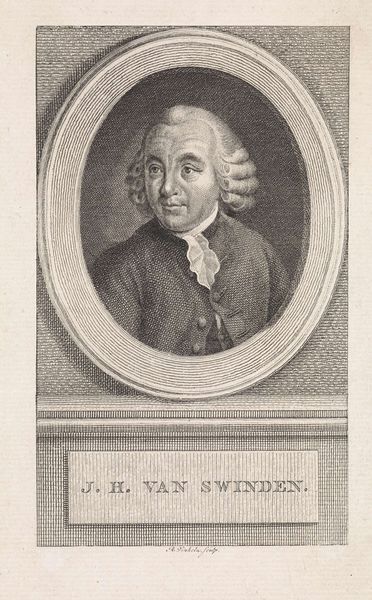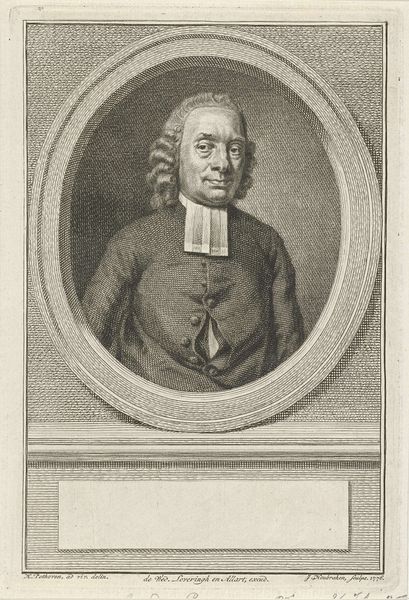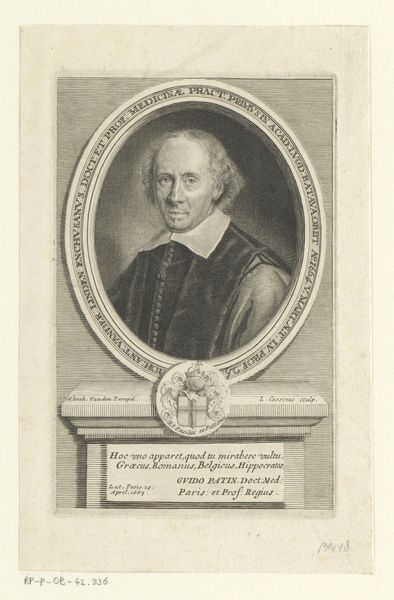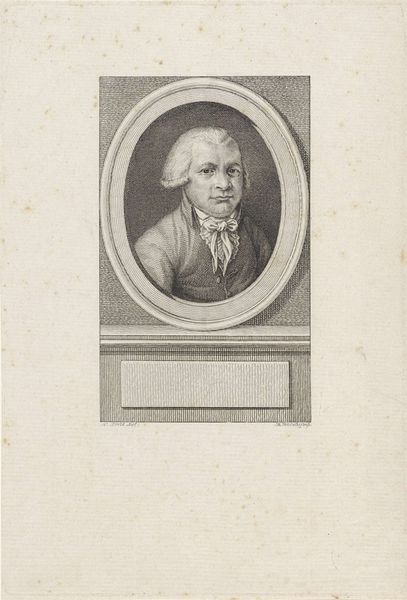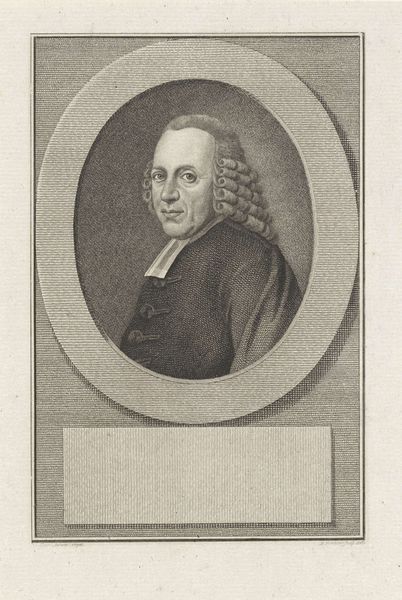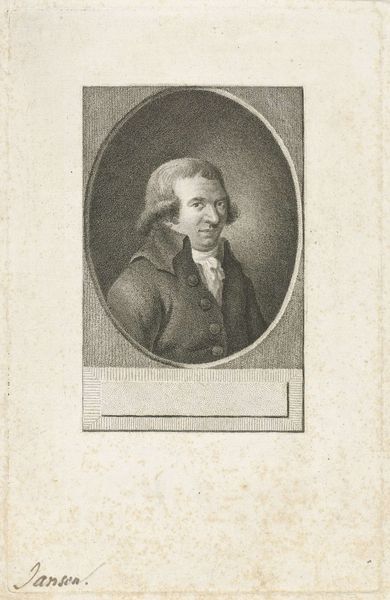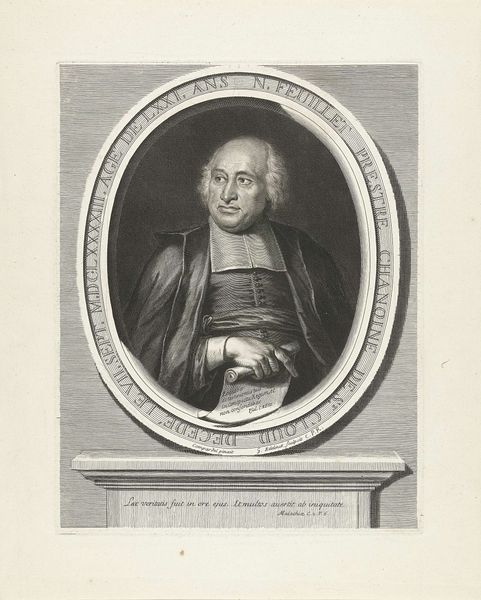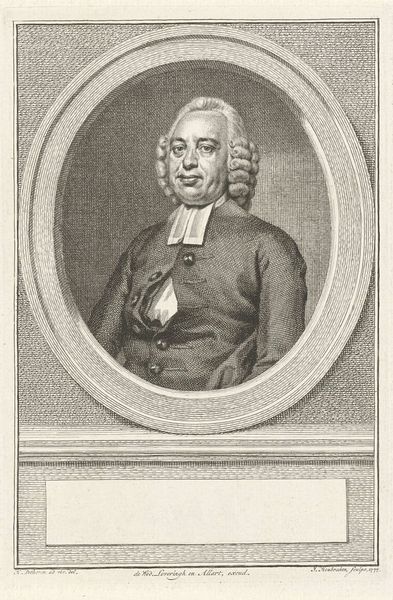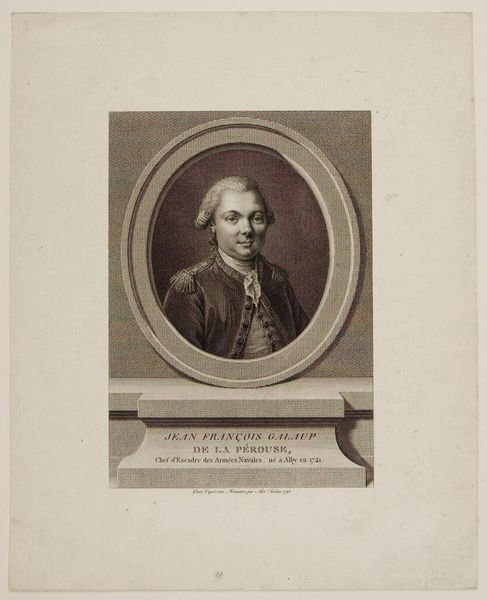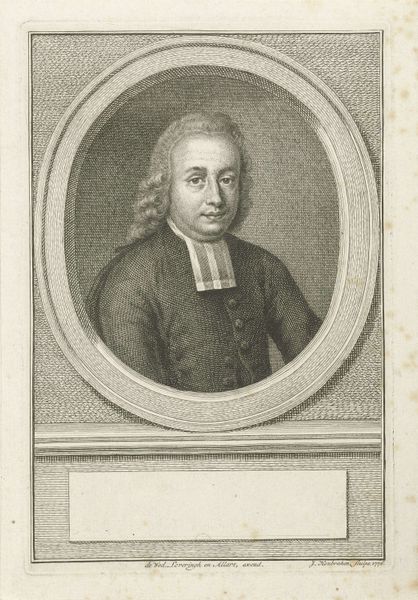
print, engraving
#
portrait
#
baroque
# print
#
historical photography
#
history-painting
#
engraving
Dimensions: height 345 mm, width 249 mm
Copyright: Rijks Museum: Open Domain
This portrait of Daniël Gravius, made by Jan van Munnickhuysen, likely around the late 17th century, employs the printmaking technique of engraving. The controlled precision of this method – cutting lines into a metal plate that will hold ink – lent itself well to the demands of reproducing images at the time. Consider how the engraved lines define Gravius’s features and clothing. The texture created by these lines isn't just about replicating visual reality; it also conveys a sense of his status and the sober dignity expected of a pastor. The act of engraving itself, requiring intense focus and meticulous craftsmanship, mirrors the values associated with the sitter. Engravings like this one circulated widely, spreading ideas and images across geographical boundaries. They were a crucial means of communication and a nascent form of mass media, impacting social and political discourse in ways we often overlook today. Appreciating the material and process helps us understand not just the image itself, but also its role in shaping culture.
Comments
No comments
Be the first to comment and join the conversation on the ultimate creative platform.
